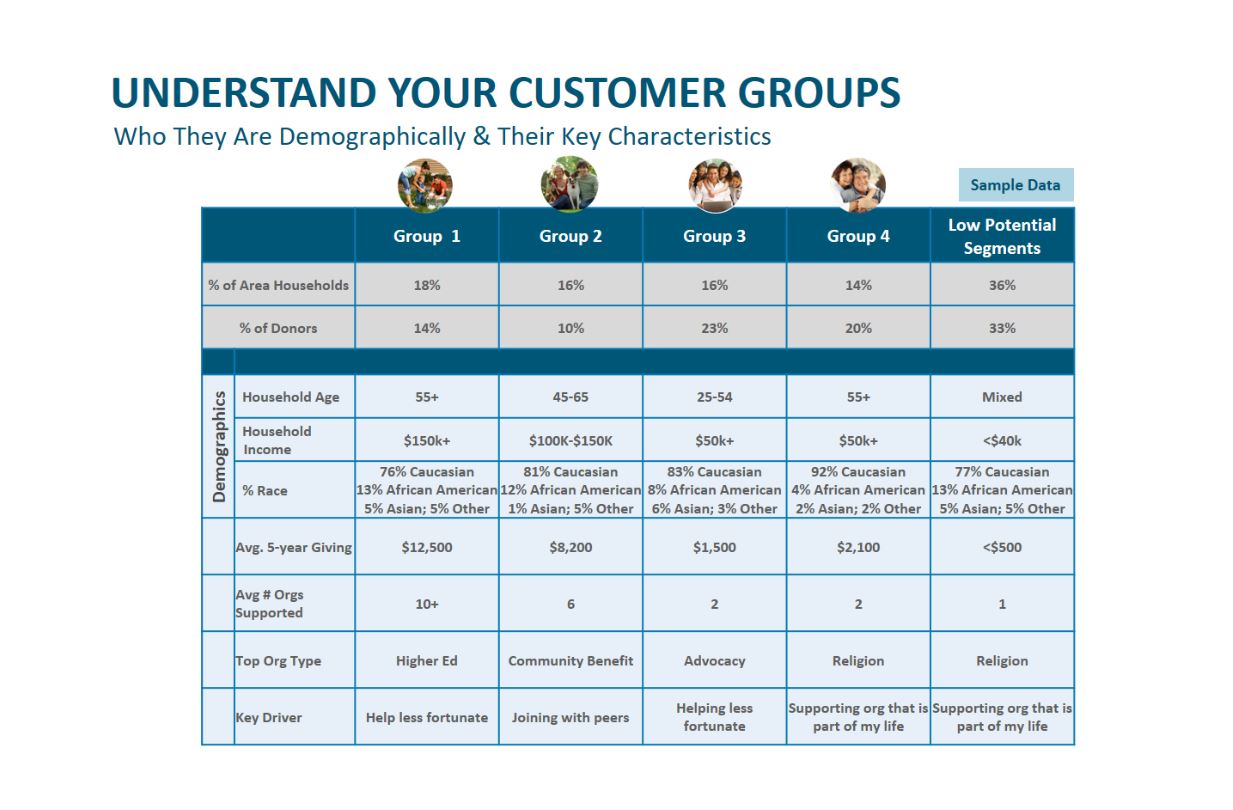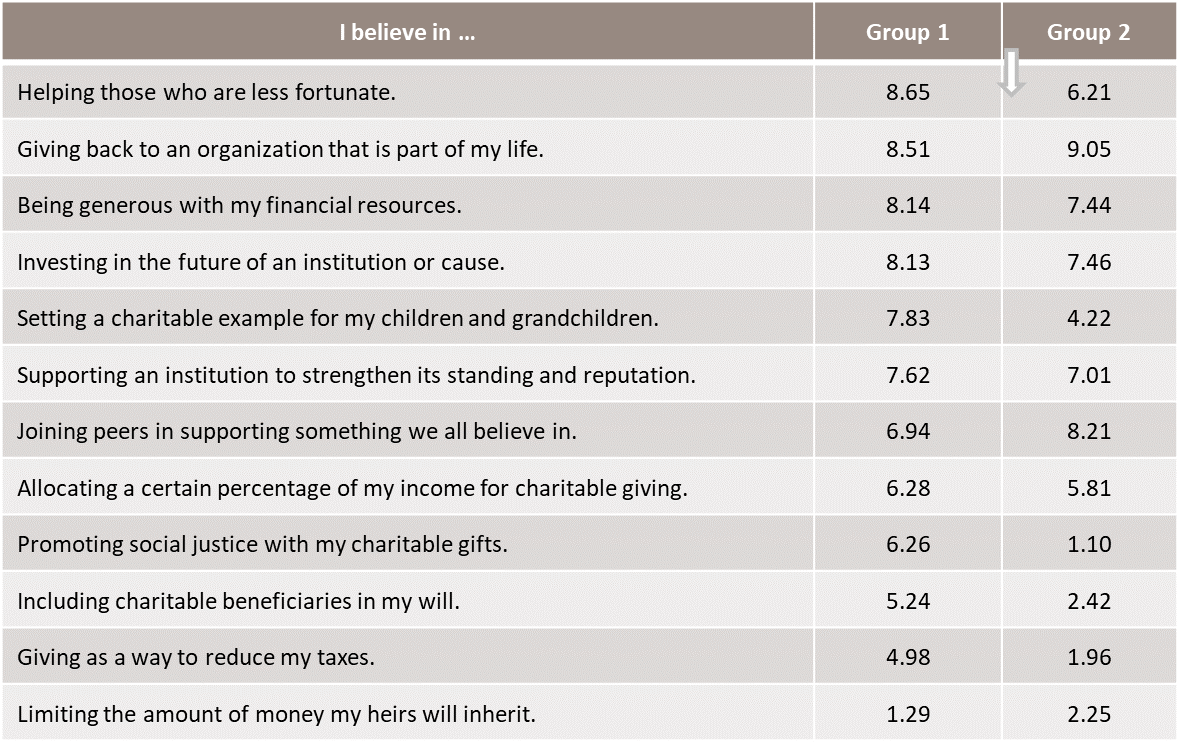by
Donor segmentation is not a new concept for most nonprofit organizations, but refined techniques and cost-effective software are making its more sophisticated methods—once reserved for big corporations—accessible to smaller organizations. Creating donor personas, or carefully defined groups that share common traits is one method that allows you to gain a more nuanced understanding of your current and prospective donors. The resulting data can help you create targeted messages—saying the right thing to the right person at the right time—while maintaining your organization’s voice.
Step 1: Listen, Observe, and Organize
Your current and prospective donors are “talking” to you about their philanthropic interests and motivations through their giving patterns, event attendance, volunteer activity, and the other ways they choose to interact with your organization. You can learn more about these individuals with screening products, such as GG+A’s DonorScape®, which provides information about their relative wealth, professional affiliations, and political and charitable contributions. You may also already have data about their age and family situation that can help you further customize messaging.
Additional results from a survey can yield even more insights, especially if it asks about philanthropy specifically. GG+A’s Survey Lab routinely asks individuals about the number and type of organizations they support, as well as what motivates them to give. The sample survey results below compare how two groups rank 12 reasons to give. Depending on your organization’s approach and goals, these groups (there would usually be a few more) might represent older versus younger alumni, consistent versus occasional donors, or single-ticket buyers versus subscribers.
Step 2: Divide and Sort
After you have gathered record-level data about your audience, you can begin to analyze differences between groups. Some traits will be associated with some other traits. For example, older donors are probably much more likely to consider charitable giving in their will than are younger donors. At the GG+A Survey Lab we use a consumer marketing technique called Multivariate Divisive Partitioning (MDP), a more sophisticated segmentation technique that yields a set of defined groups—personas—that share specific demographics and lifestyles which strongly predict giving behavior (e.g., have a mutual fund and an annual income over $100,000 and are over age 45 and donate to charities, among many other characteristics). In the example below, each group represents a persona: There are countless ways to drill down into these personas depending on your needs. For instance, you might want to determine how each group prefers to receive information about charitable organizations, the gift amount they are most likely to make, or the message content they find most compelling. If you want to appeal to individuals in a specific geographic area, you can analyze personas by zip code and determine their most likely living areas (urban, rural, suburban, etc.).
There are countless ways to drill down into these personas depending on your needs. For instance, you might want to determine how each group prefers to receive information about charitable organizations, the gift amount they are most likely to make, or the message content they find most compelling. If you want to appeal to individuals in a specific geographic area, you can analyze personas by zip code and determine their most likely living areas (urban, rural, suburban, etc.).
Step 3: Make a Plan
Using personas to cultivate donors involves customizing your stewardship activities and messaging for each persona based on their financial value, their preferred communication channels, and the messages most likely to activate them. We encourage you to test two versions of each communications piece (i.e., A/B testing) within a persona so that you can systematically track what is more effective—or what isn’t effective at all.
Personas have applications across many nonprofit sectors. A cultural organization may want to attract donors within a specific geographical area, whereas a college or school is more likely to target specific donor segments, such as alumni, parents, and other supporters. Likewise, a healthcare organization may need to identify personas within existing donor groups, hospital patients, and patients of the affiliated physicians group.
I once attended a conference session entitled “Annual Giving: How to write a love letter to 100,000 people.” Personas provide a framework to do this so you can become increasingly specific and targeted. As we move toward a world where “one size fits none,” personas provide the nuanced information necessary to say the right things to the right person at the right time.
The GG+A Survey Lab provides market research, surveys, focus groups, and analysis to support your organization’s vision. Learn more about us at www.grenzebachglier.com/surveylab


